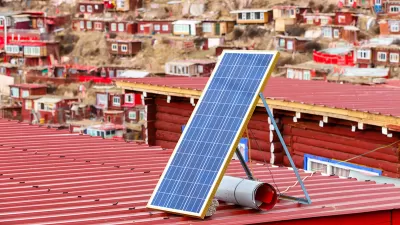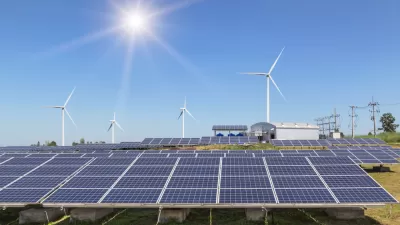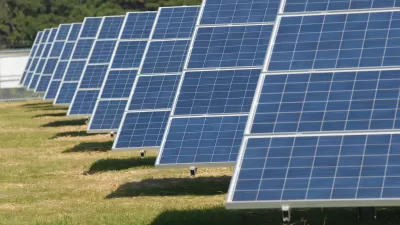Fears of a US trade war and a slowing economy have translated into fewer subsidies for solar and wind energy in China.

China is the world’s largest market for renewable energy, but the growth of that energy in the country is slowing. The Chinese government has reduced subsidies for solar and wind, and the energy resources the country does have can’t always be easily transmitted. "Although major solar and wind power installations in China’s more far-flung provinces can produce large amounts of renewable energy, a lack of high-voltage transmission infrastructure means that a sizeable percentage of that green energy still goes unused," Michael Standaert reports for Yale Environment 360. These provinces may have ideal conditions for generating power, but they are isolated from the industrial and population centers that consume the power.
The renewable energy industry has a double challenge in dealing with new policies. "[W]hile curtailing subsidies for wind and solar power, the central government has sharply increased financial support for what it calls “new energy” extraction, which includes fracking of shale gas and separating methane from coal," Standaert writes This has big implications for the world’s biggest carbon emitter. "After plateauing from 2014 to 2016, China’s carbon dioxide emissions have risen in the last several years, with an estimated 4 percent increase in the first half of 2019," Standaert reports.
Kevin Tu, former China program manager at the International Energy Agency, believe this change in policy is likely to continue, driven by fears of slowing economic growth, especially in the context of a trade war with the United States.
FULL STORY: Why China’s Renewable Energy Transition Is Losing Momentum

Alabama: Trump Terminates Settlements for Black Communities Harmed By Raw Sewage
Trump deemed the landmark civil rights agreement “illegal DEI and environmental justice policy.”

Study: Maui’s Plan to Convert Vacation Rentals to Long-Term Housing Could Cause Nearly $1 Billion Economic Loss
The plan would reduce visitor accommodation by 25% resulting in 1,900 jobs lost.

Planetizen Federal Action Tracker
A weekly monitor of how Trump’s orders and actions are impacting planners and planning in America.

Wind Energy on the Rise Despite Federal Policy Reversal
The Trump administration is revoking federal support for renewable energy, but demand for new projects continues unabated.

Passengers Flock to Caltrain After Electrification
The new electric trains are running faster and more reliably, leading to strong ridership growth on the Bay Area rail system.

Texas Churches Rally Behind ‘Yes in God’s Back Yard’ Legislation
Religious leaders want the state to reduce zoning regulations to streamline leasing church-owned land to housing developers.
Urban Design for Planners 1: Software Tools
This six-course series explores essential urban design concepts using open source software and equips planners with the tools they need to participate fully in the urban design process.
Planning for Universal Design
Learn the tools for implementing Universal Design in planning regulations.
Caltrans
Smith Gee Studio
Institute for Housing and Urban Development Studies (IHS)
City of Grandview
Harvard GSD Executive Education
Toledo-Lucas County Plan Commissions
Salt Lake City
NYU Wagner Graduate School of Public Service





























